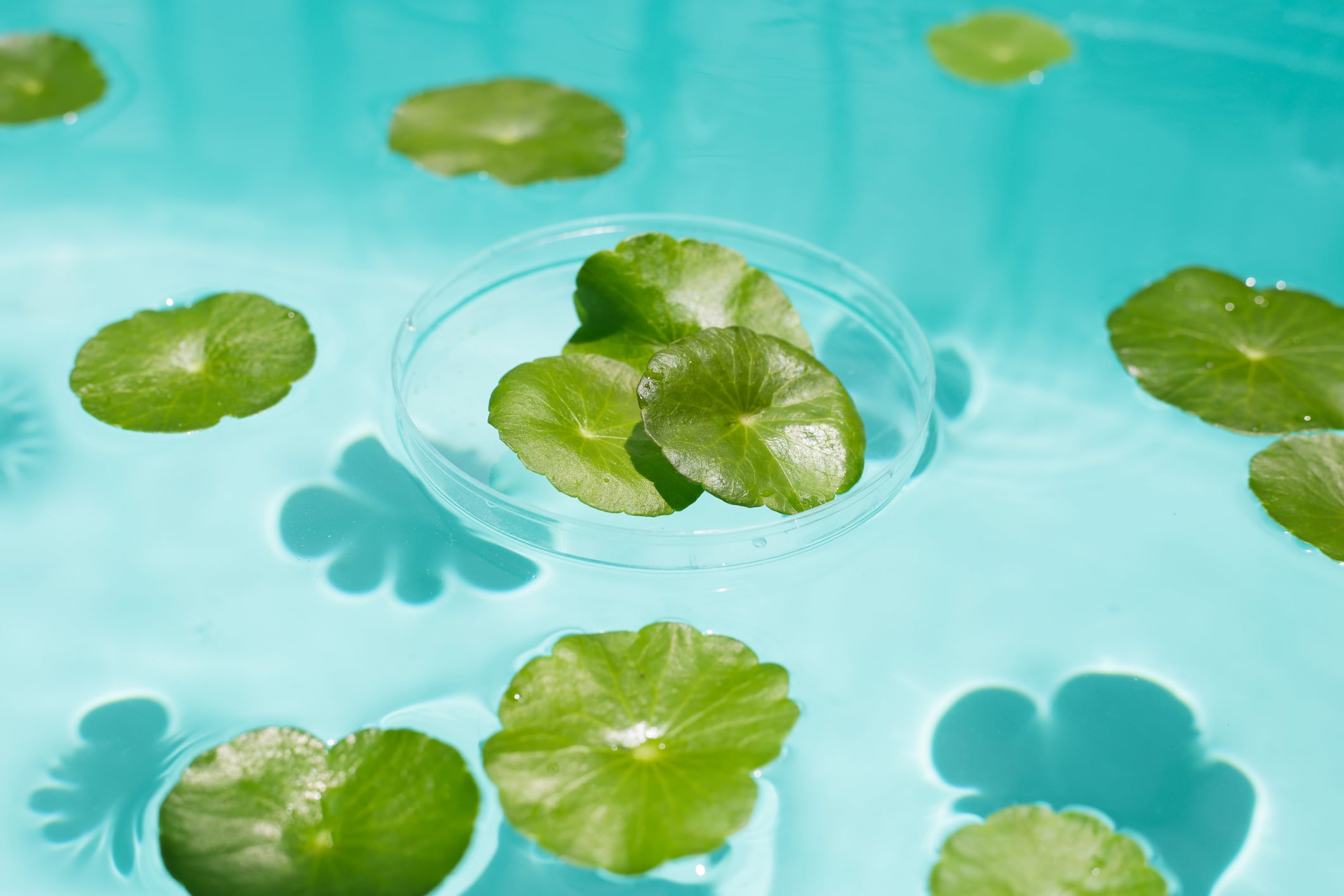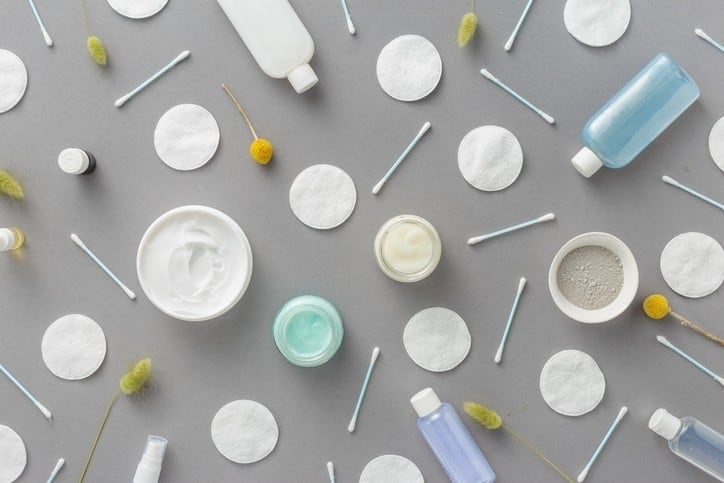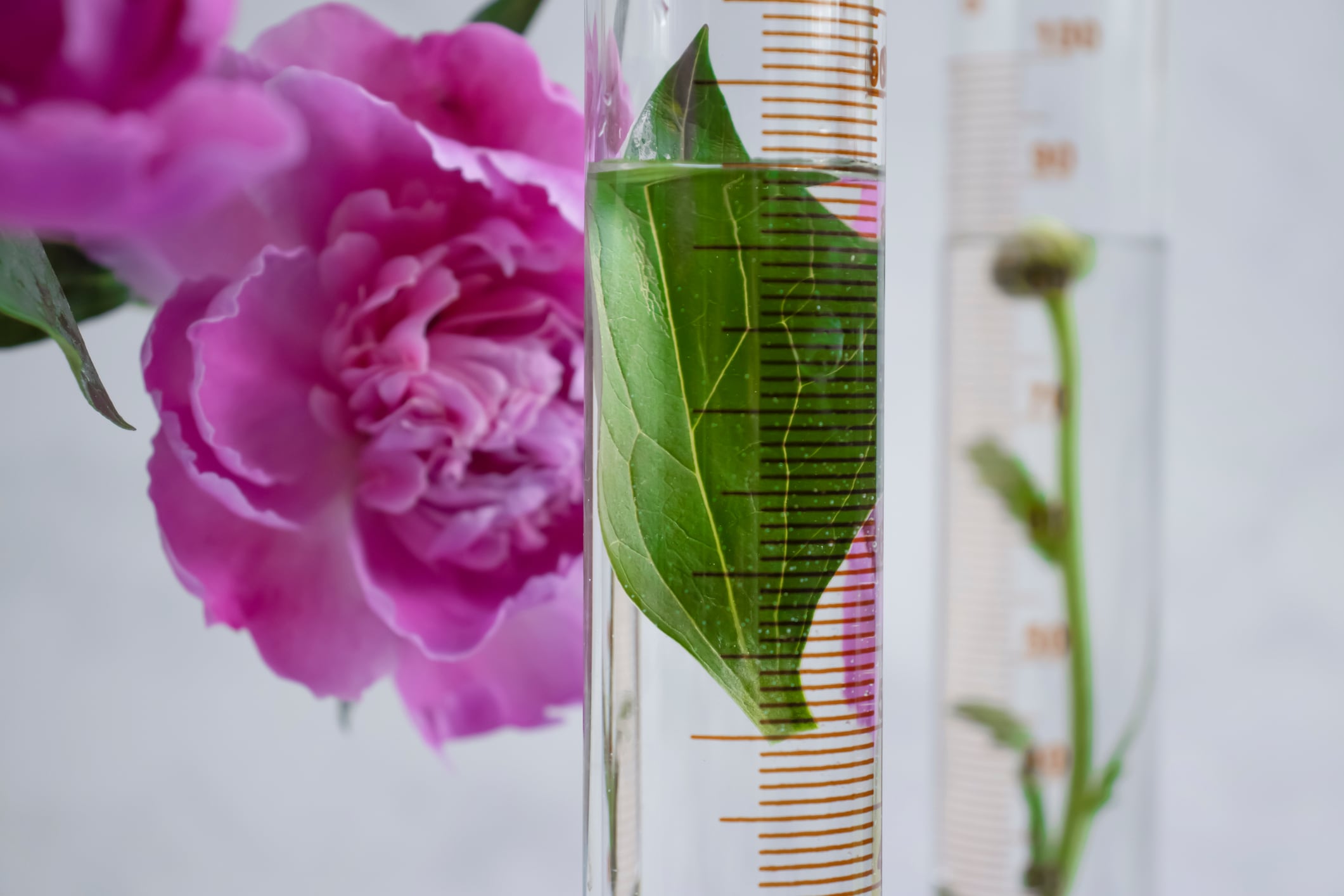Rich in triterpenoids, flavonoids and polyphenols, Centella asiatica (CICA) has gained prominence in the beauty industry for its anti-inflammatory, antioxidant, and wound-healing properties.
CICA-derived exosomes, particularly extracellular vesicles (EVs) isolated from CICA, have emerged as a next-generation bioactive due to their superior efficacy in skin regeneration and inflammation reduction, compared to crude extracts.
To evaluate the safety and efficacy of a topical CICA-EV ampoule from JUVEV — a brand of Korean firm Microgentas that specialises in exosome extraction technology — researchers conducted two separate studies.
The first was a 24-hour primary skin irritation test involving 30 healthy Korean adults, and the second was a two-week efficacy trial comprising 20 participants to assess the CICA-EV ampoule’s effects on various aspects of skin health.
The study product is a clear, water-based serum formulated to deliver high-purity CICA-derived exosomes (20,000ppm) together with other moisturising and barrier-enhancing actives. During the two-week efficacy trial, participants applied it twice daily to the face.
After usage of the CICA-EV ampoule, it was found that pore volume decreased by 40.1%, pore area by 17.9%, pore density by 26.9%, and surface roughness by 9%.
“Our clinical outcomes align with prior reports of exosome-enriched topicals enhancing matrix protein synthesis and barrier recovery. Notably, the 40% reduction in total pore volume surpasses improvements typically reported with peptide or retinoid creams (10 to 20%), highlighting the potency of CICA-derived exosomes,” the authors wrote.
Furthermore, there was a reduction in wrinkle depth at five facial regions, namely forehead, glabella, periorbital (crow’s feet), nasolabial folds (laugh lines), and neck.
In particular, forehead wrinkles, often associated with early signs of ageing due to repetitive facial expressions, were reduced by 7.8%. Glabellar lines (frown lines), which tend to be deeper and more persistent, had a bigger reduction of 11.3%.
These results indicate notable improvement in dynamic wrinkle (expression-driven) regions.
The periorbital area demonstrated an 11.7% decrease in wrinkle depth, while nasolabial folds exhibited the most substantial reduction of 18.8%, suggesting volumising or smoothing effects in this relatively deep static wrinkle (gravity-related) region.
In the neck, where the skin is thinner and more prone to creasing, a 9.5% improvement was observed.
Range of benefits
The initial closed patch test was conducted on the upper backs of the participants. A board-certified dermatologist graded skin responses at 30 minutes and 24 hours after patch removal, with no participant exhibiting any signs of erythema (redness), oedema (swelling), or other irritant reactions at either time point.
During the two-week trial, the effects of a single application of the CICA-EV ampoule on dermal hydration at three depths were examined, with all depths showing significant increases in moisture content.
At 0.5mm depth, a single application increased tissue dielectric constant (TDC) from 40.4 ± 6.3 at baseline to 43.5 ± 5.9 after use, representing a 7.9% improvement.
Though lesser, improvements were also observed at deeper layers — TDC rose by 6.5% at 1.5mm depth and by 4.5% at 2.5mm depth. These findings indicate that the study product “rapidly and significantly” enhanced hydration throughout the skin strata.
“The hydration increases at progressive depths further distinguish this formulation from conventional humectants, which rarely achieve statistically significant moisture gains below the superficial epidermis.”
Additionally, a 12.67% increase in dermal density, measured by ultrasound, further backs the underlying skin-reinforcing effects of the CICA-EV formulation.
The anti-inflammatory activity of the EVs was confirmed in lipopolysaccharide (LPS)-stimulated HaCaT keratinocytes. The mRNA expression of pro-inflammatory cytokines, including IL-1β, IL-6, and TNF-α, was reduced in a dose-dependent manner.
At 25µg/mL, IL-6 and IL-1β expression fell by 47.1% and 48.6% respectively, while TNF-α expression decreased by 30.1%, indicating that these EVs may modulate inflammation associated with skin ageing and irritation.
Further assays supported the wound healing effects and regenerative capacity of the EVs.
During this test period, no adverse skin reactions, such as pruritus (itching), dryness, or contact dermatitis (itchy rash), were reported, demonstrating that the CICA-EV ampoule is non-irritating and well tolerated under both patch-test and extended-use conditions.
“The pronounced effects are attributed to the exceptional penetration capacity of CICA-derived exosomes and their bioactive cargo. These outcomes provide compelling evidence that the study product not only improves superficial wrinkle appearance, but also promotes measurable skin structural enhancement, offering quick and visible anti-ageing benefits across both dynamic and static facial regions.
“The findings also highlight the formulation’s excellent skin compatibility and multifaceted cosmetic benefits, underscoring its application potential for safe and effective anti-ageing and barrier-repair products.”
Points to consider for future research
An important consideration in exosome-based cosmetic development is the stability and shelf life of EVs within complex formulations.
“While trehalose or mannitol may help preserve exosome integrity, even refrigerated storage cannot fully prevent degradation over time. Moreover, verifying stability via Nanoparticle Tracking Analysis (NTA) is technically challenging due to the interference of formulation components, such as humectants and surfactants.
“As such, alternative methods like fluorescence-labelled EV marker detection using enzyme-linked immunosorbent assay (ELISA) or Western blotting may be more suitable for assessing exosome presence and integrity in cosmetic products.”
Although this study showed initial efficacy, longer-term randomised, placebo-controlled trials with extended follow-up periods and larger, more diverse cohorts are warranted to evaluate the durability and cumulative benefits of CICA-EV treatment, optimise dosing, and further elucidate underlying molecular mechanisms.
“To isolate the specific contribution of exosomes, future studies should compare the CICA-EV ampoule against an identical formulation lacking CICA-EVs. Mechanistic investigations, including transcriptomic or proteomic profiling of skin biopsies, will be critical for validating exosome-mediated biomarker changes.
“In addition, head-to-head comparisons with established anti-ageing actives, such as retinoids and peptides, will help position CICA exosome ampoules within the broader cosmetic landscape,” the authors concluded.
Source: Cosmetics
https://doi.org/10.3390/cosmetics12040135
“Clinical Efficacy and Safety Evaluation of a Centella asiatica (CICA)-Derived Extracellular Vesicle Formulation for Anti-Aging Skincare”
Authors: Hannah S. Park and Sehyun Shin





